What are the three trigonometric ratios and their meaning?
Sine = opposite/hypotenuse
Cosine = adjacent/hypotenuse
Tangent = opposite/adjacent
SOHCAHTOA
What buttons do you press on the calculator to get the inverse trigonometric ratios?
(2nd) + (cos) = cos-1
(2nd) + (sin) = sin-1
(2nd) + (tan) = tan-1
What is the measure of angle E?
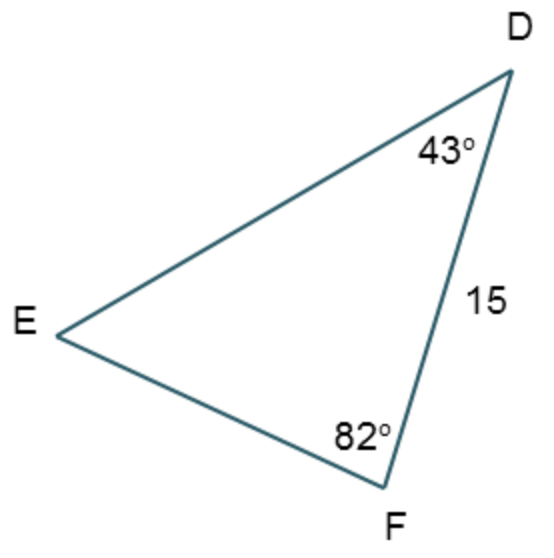
55
How would you correctly fill in the formula for the following triangle?
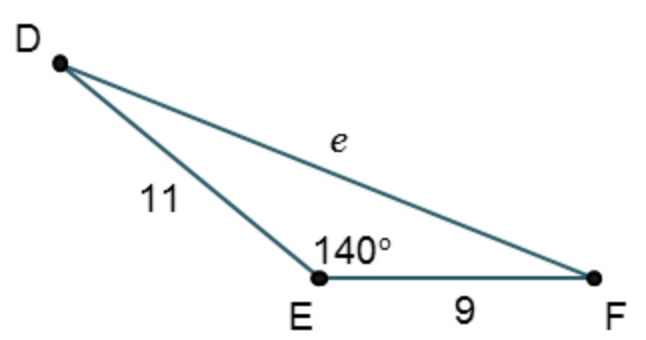
a^2 =b^2 +c^2 - 2bc cosA
e^2 = 9^2 + 11^2 - 2(9)(11)cos(140)
e^2 = 11^2 + 9^2 - 2(11)(9)cos(140)
What is the name of the trigonometric ratio that uses "Adjacent" and "Hypotenuse"?
Cosine
(Cos)
Find the tangent of V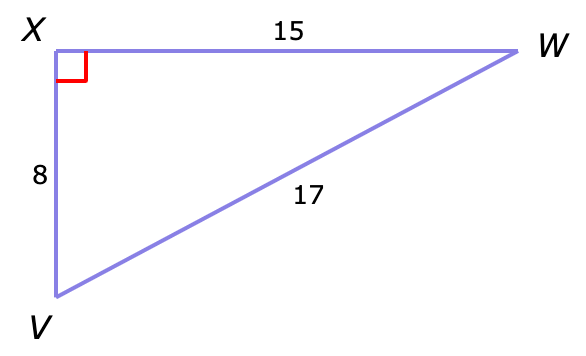
15/8
Solve for A. Round your answer to the nearest whole number
sin(A) = 0.4848
A = 29
Determine the measure of EF using the law of sine. Round your answer to the nearest whole number.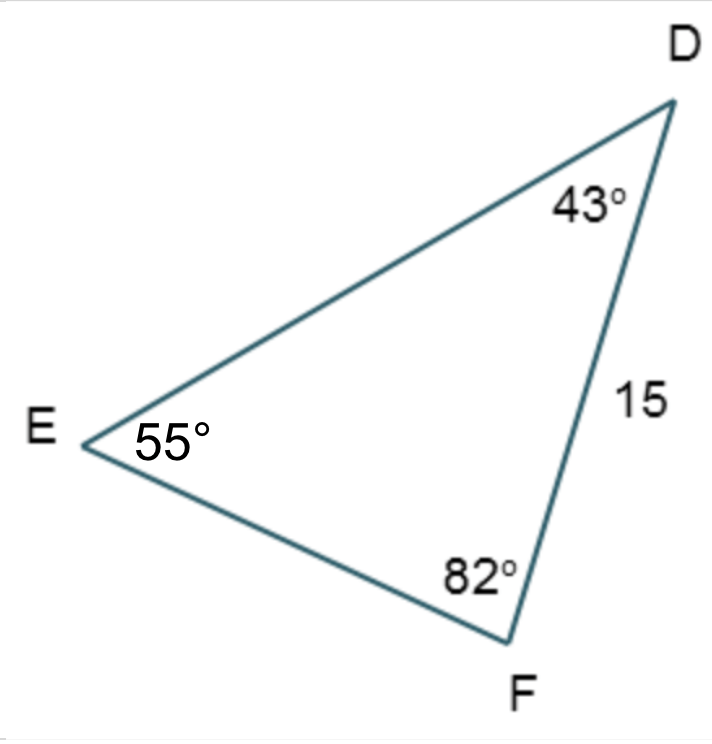
x/sin(43) = 15/sin(55)
x = 12.488... = 12
Determine the value of x using the law of cosine. Round your answer to the nearest whole number.
a^2 = b^2 +c^2 - 2bc cos(A)
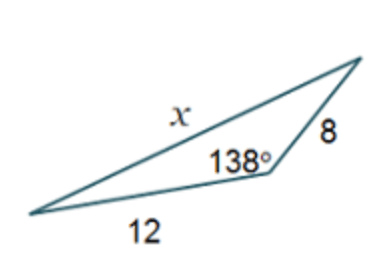
x^2 = 8^2 + 12^2 - 2(8)(12)cos(138)
x^2 = 350.683...
x = 18.726... = 19
What is the name of the trigonometric ratio that uses "Adjacent" and "Opposite"?
Tangent
Find the sine of R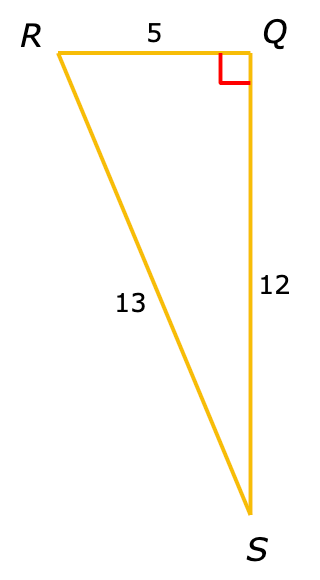
12/13
Using inverse trigonometric ratios, find the value of θ. Round your answer to the nearest whole number.
In relation to the missing angle, the following triangle gave the gave the opposite and the hypotenuse, which is sine.
therefore sin^-1 (12/17) = 44.9008... = 45
Determine the value of t using the law of sine. Round your answer to the nearest whole number.
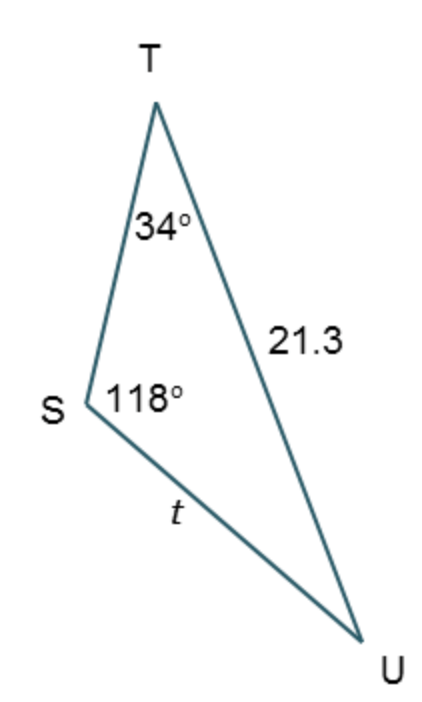
t/sin(34) =21.3/sin(118)
t = 13.489... = 13
Determine the value of s using the law of cosine. Round your answer to the nearest whole number.
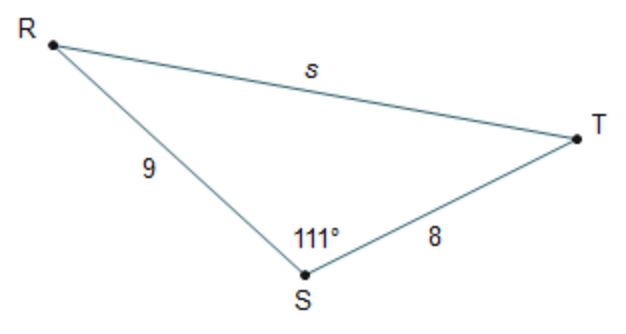
s^2 = 9^2 +8^2 - 2(9)(8) cos(111)
s^2 = 196.604...
s = 14.021 ... = 14
When dealing with trigonometric ratios of a triangle, should you have your calculator on "Radian" mode or "Degree" mode?
Degree mode
Find the cosine of X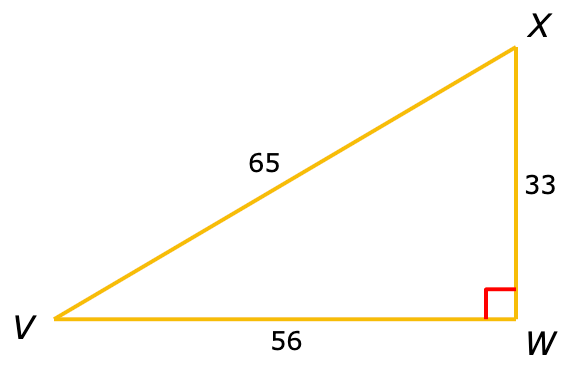
33/65
Using inverse trigonometric ratios, find the value of ?. Round your answer to the nearest whole number.
In relation to the missing angle, the following triangle gave the adjacent and the hypotenuse, which is cos.
therefore cos^-1 (12/17) = 36.869... = 37
Determine the measure of PR using the law of sine. Round your answer to the nearest whole number.
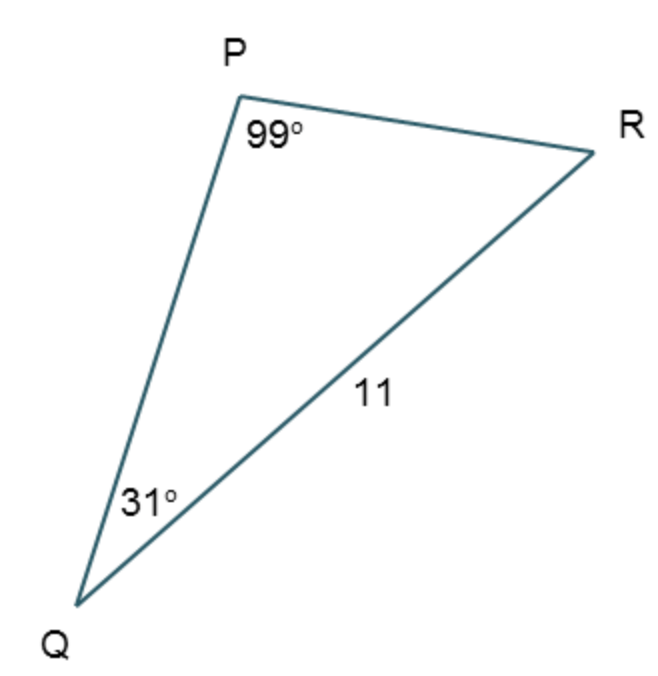
x/sin(31) = 11/sin(99)
x = 5.736... = 6
What is the measure of  Q to the nearest whole degree?
Q to the nearest whole degree?
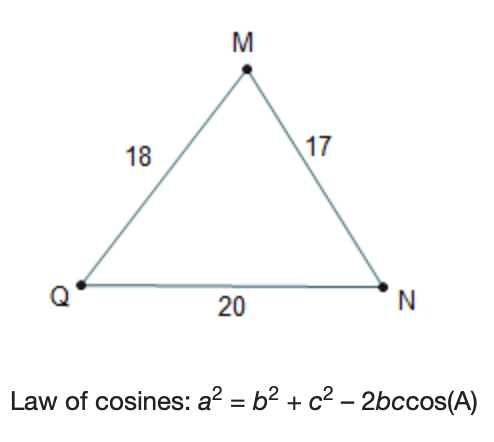
17^2 = 18^2 + 20^2 - 2(18)(20) cos(Q)
289 = 724 - 720cos(Q)
-435 = -720cos(Q)
0.6041... = cos(Q)
cos^-1 (0.6041...) = Q
Q = 52.831... = 53
Cosecant is the inverse of which trigonometric ratio?
(Sin)
Find the tangent of X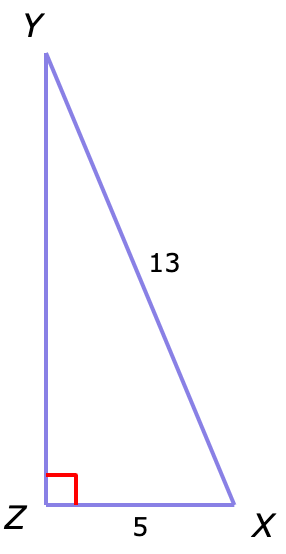
12/5
Using inverse trigonometric ratios, find the value of ?. Round your answer to the nearest whole number.
In relation to the missing angle, all three options are given. Which means you can use any of the three ratios
cos^-1 (48/50) = 16.26... = 16
sin^-1 (14/50) = 16.26... = 16
cos^-1 (14/48) = 16.26... = 16
Determine the measure of w using the law of sine. Round your answer to the nearest whole number.
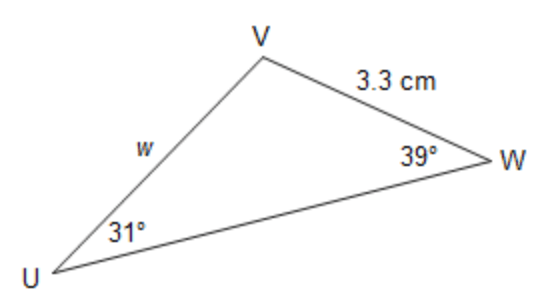
w/sin(39) = 3.3/sin(31)
w = 4.032... = 4
Determine the value of θ using the law of cosine. Round your answer to the nearest whole number.
a^2 = b^2 +c^2 - 2bc cos(A)
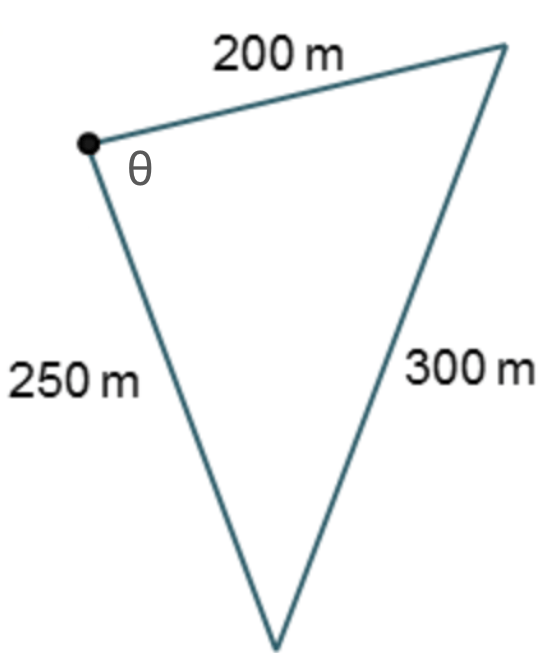
300^2 = 200^2 +250^2 - 2(200)(250) cos(theta)
90000=102500-100000 cos(theta)
-12500 = -100000 cos(theta)
0.125 = cos(theta)
cos^-1 (0.125) = theta
theta = 82.819 ... = 83
Which law is listed below?
a/sin(A) = b/sin(B) = c/sin(C)
Law of Sine